In this guide, we’re diving into the mechanics behind the grunt — how does a high-pressure water gun work, what makes it tick, and how to use one without soaking yourself, gouging timber, or blowing out next door’s fence palings.
We’ve wrangled all kinds of pressure guns across Australia — from basic water blasters barely stronger than a backyard water fight, to industrial-grade units that could strip paint off a ute if you’re not careful. Whether you’re in the building game or just trying to blast grime off your patio furniture, understanding the nuts and bolts of how these machines work can save you a world of pain (and a few splinters).
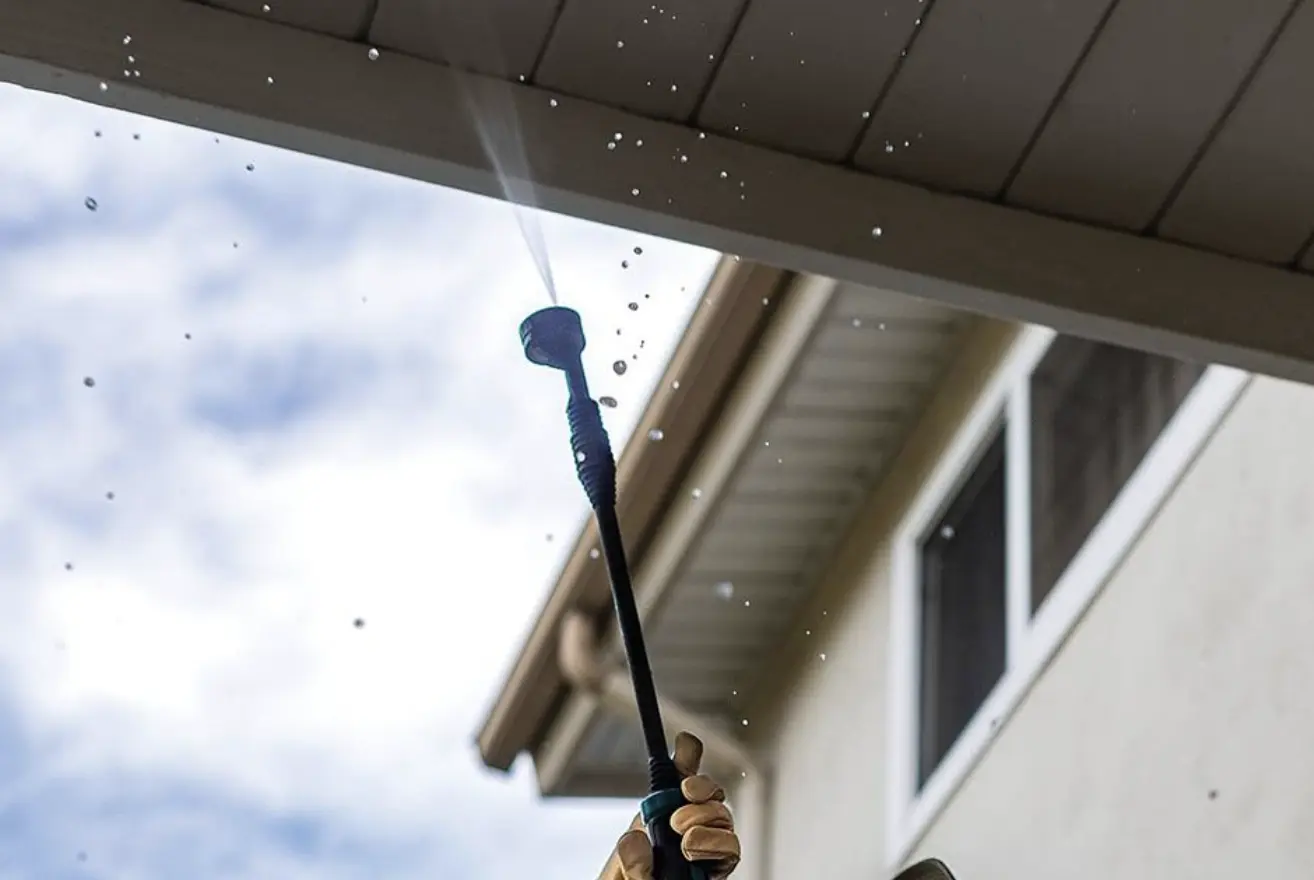
What You Need to Know about high-pressure Water Gun
A high-pressure water gun (also known as a pressure water spray gun or spray gun) is part of a broader high-pressure cleaning apparatus. Think of it as the control end of your power washer — the bit that releases a pressurised stream of water when you squeeze the trigger mechanism.
Inside that compact shell is a simple trigger gun loaded with an internal pump mechanism, valves, and seals. Hooked up to a high-pressure hose, it directs a concentrated stream of water at anywhere from 1300 to 5000 PSI (that’s pounds per square inch — a lot more oomph than your standard garden hose).
And no, it’s not powered by magic. You’ve either got a powered motor (like an electric motor or compact gasoline engine) running a water pump, or in fancier rigs, Gas engine models designed for constant use.
How Does the Whole System Work?
1. Water Source and Inlet
- Your water source (usually a tap or water tank) feeds in clean water via a Water Inlet.
- Some systems can also draw from a water reservoir or a bit of tubing, including setups like a hand-operated groundwater pump for remote work.
2. Water flows into the Pump
- Once the water pipes carry the water in, it enters the pump mechanism, usually driven by either an electric motor or a compact gas engine.
- This is where ordinary water becomes pressurised water — multiplied up to 60 times normal atmospheric pressure.
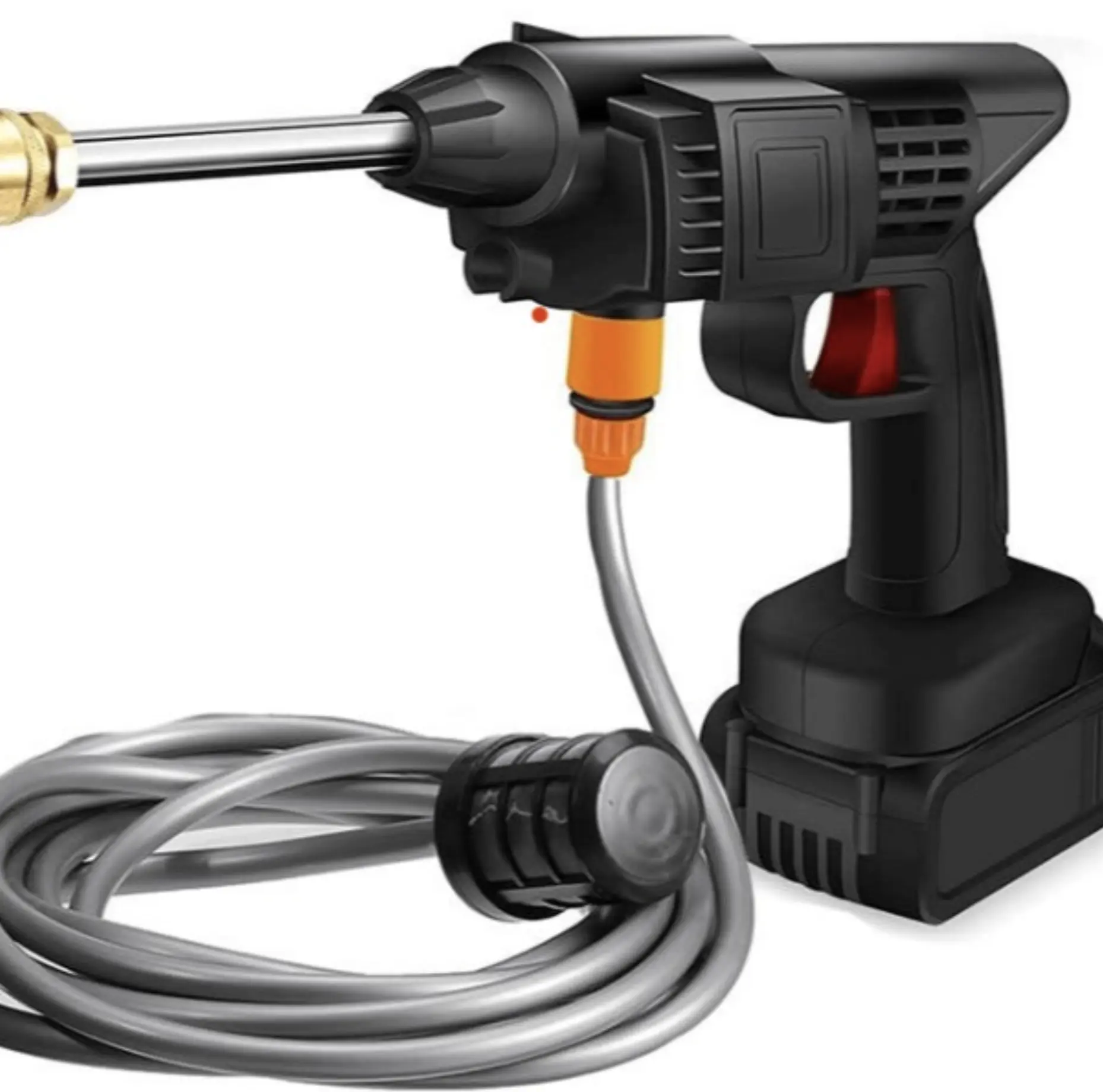
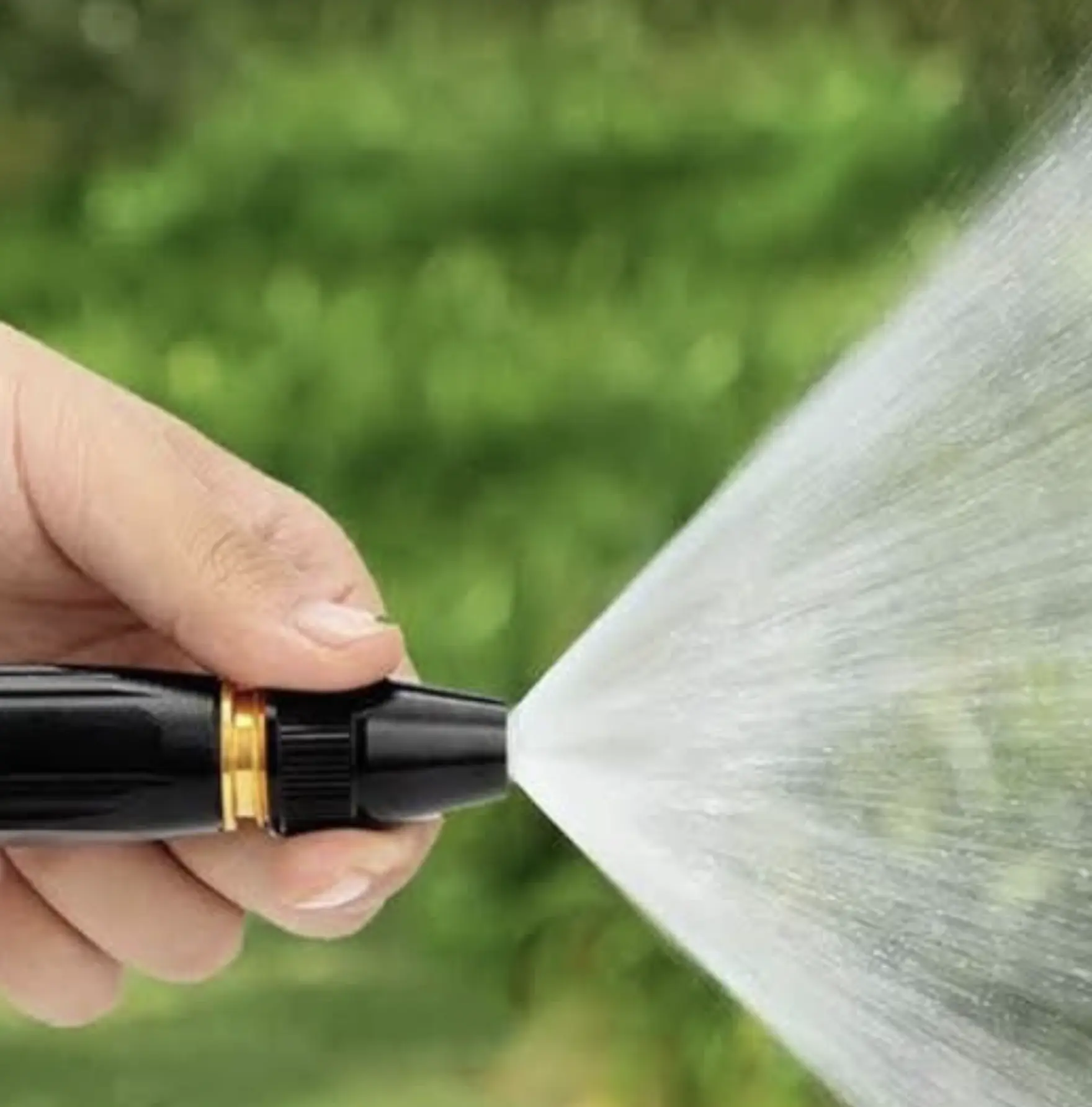
2. Water flows into the Pump
Step 2: Cleaning & Surface Repair
- The now-pressurised water moves through a high-pressure exit hose — typically reinforced, kink-resistant, and tougher than a roo bar.
- It leads to your spray gun, ready for action.
4. The Spray Gun’s Job
- You pull the trigger.
- A pressure valve opens.
- The water flows out at high speed via a narrow nozzle, forming a high-pressure jet or wide spray — depending on your setting.
- The result? Cleaning power that can strip paint, remove mo
Types and What They Do
Your pressure washer nozzle isn’t just a hole. It’s the brain of the operation.
| Nozzle Type | Spray Angle | Best For |
|---|---|---|
| Red | 0° | Concentrated stream – only for concrete or tough stains |
| Yellow | 15° | Stripping paint, heavy-duty cleaning |
| Green | 25° | General outdoor surfaces, flat surfaces, and furniture |
| White | 40° | Delicate cleaning, like windows or car washing |
| Black | 65° | Low-pressure soapy water application |
Also, adjustable nozzles give you more flexibility without changing parts mid-job — handy when you’re bouncing between garden hose nozzle work and blasting driveways.
PSI, GPM, and What It All Means
These terms get thrown around more than a wheelbarrow on demo day:
- PSI (Pounds per Square Inch): How strong the water hits.
- GPM (Gallons per Minute) or litres per minute: How much water flows.
Together, they define your cleaning efficiency. A higher PSI helps you blast through dry dirt, while more GPM rinses it away quickly. Too much PSI with low GPM = you’ll just poke holes in stuff.

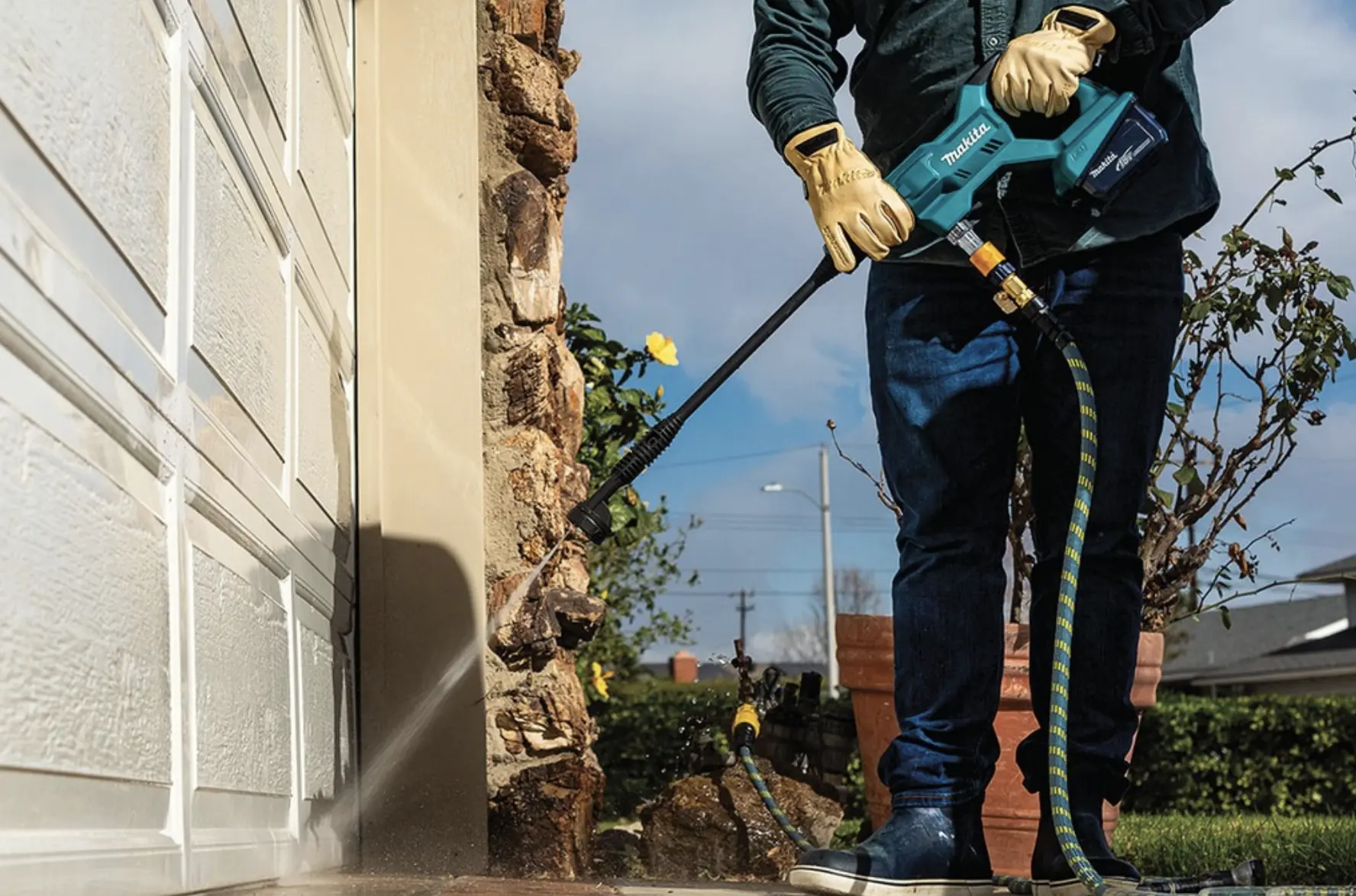
Traditional Methods vs Pressure Guns
A basic design using a bucket and broom? That’ll do for surface dirt, but good luck with grease, oil stains, or bits of grit embedded in dirt from floor tiles.
Using a powerful washer? You’re looking at:
- 10x faster cleaning performance
- Less water leakage and waste
- Better cleaning solution penetration
- Higher cleaning efficiency on flat surfaces like walls, tiles, and pavers
We’ve even cleaned industrial laundry areas and surfaces for painting prep using nothing more than a pressure washer, powered attachments, and a solid mix of detergent.
Common Pressure Gun Setups
| Washer Type | Power Source | Use Case |
|---|---|---|
| Cold water pressure washer | Electric | Homes, vehicles, paths |
| Gas-powered pressure washer | Petrol engine | Heavy-duty & commercial |
| Trailer-mounted units | Generator or vehicle-powered | Big jobs, remote sites |
| Air compressor-style units | Air-driven | Specialty cleaning tasks |
Some rigs even combine with air compressors and wire mesh filters to trap bits of grit and prevent accidental damage to sensitive surfaces.Window Cleaning Melbourne Crew has handled the lot — from cold water pressure washers on windows to powerful water jets on concrete.
Safety and Smarts
- Blast painted render with a narrow nozzle — you’ll peel it like an orange
- Point it at people or pets (even for laughs — pressure jets are dangerous)
- Run dry — no water = ruined pump mechanism
- Use soapy water from random detergents — they’ll clog your system

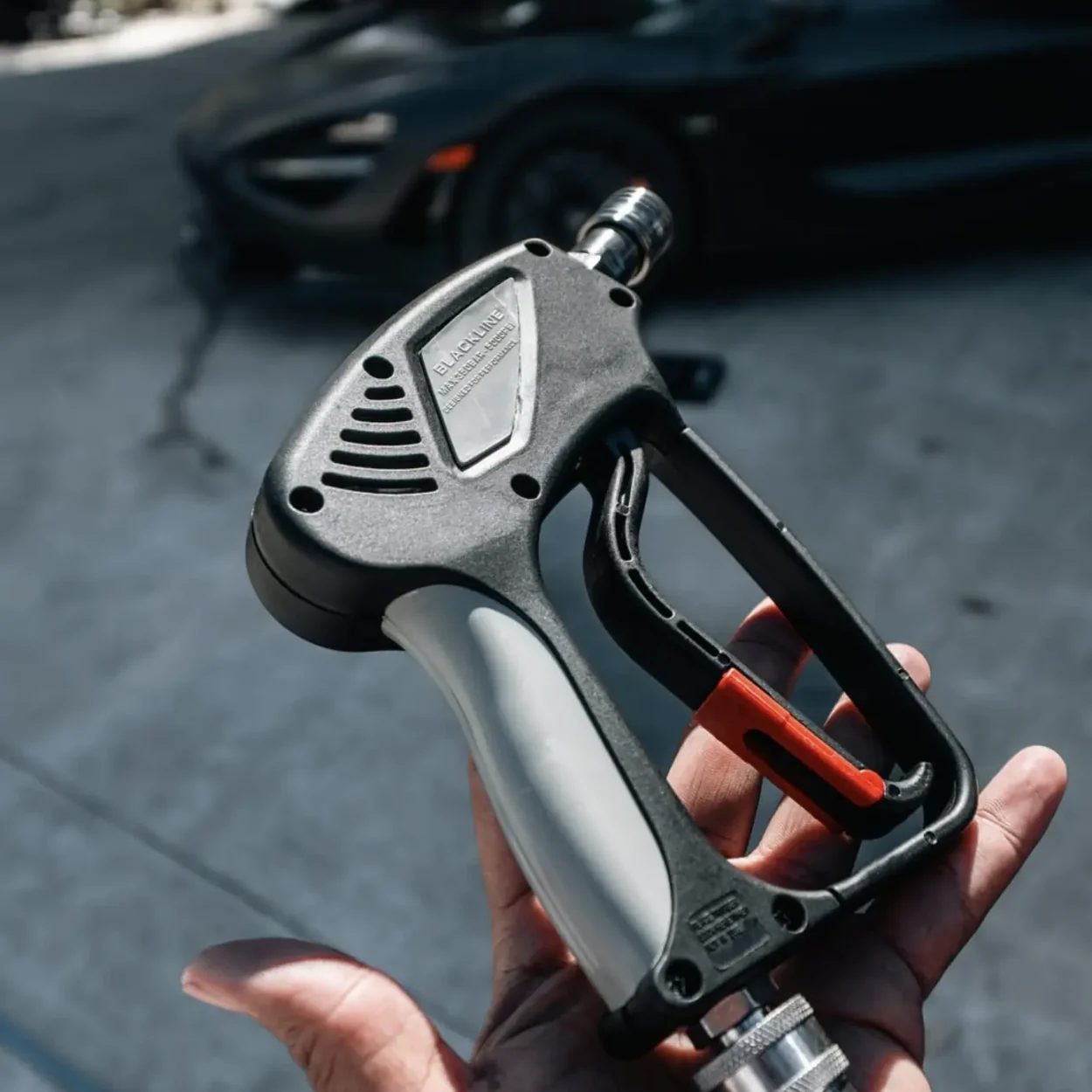
Cleaning Attachment
Your arsenal of water weapons can grow fast. Here’s what’s worth it:
- Surface cleaner discs – Spin and cover large areas evenly
- Rotating nozzles – Add extra scrubbing motion
- Foam cannons – Essential for car lovers and their beloved vehicle
- Telescopic lances – Reach eaves or rooftops without a ladder
If you’ve ever tried to clean second-storey windows with a broom on a pole, you’ll know why we recommend investing in the right gear.
Cleaning by Region (Yep, It Matters)
- Coastal areas: Salt builds up — rinse with clean water often
- NT & outback: Red dust is like concrete when it sets
- VIC & NSW winters: Expect mould and moss buildup on shady driveways
- QLD wet season: Water everywhere, but still check your access to water for your unit
In every case, proper use of adjustable pressure settings, a stable power supply, and correct nozzles will mean better outcomes, faster cleans, and less surface damage.
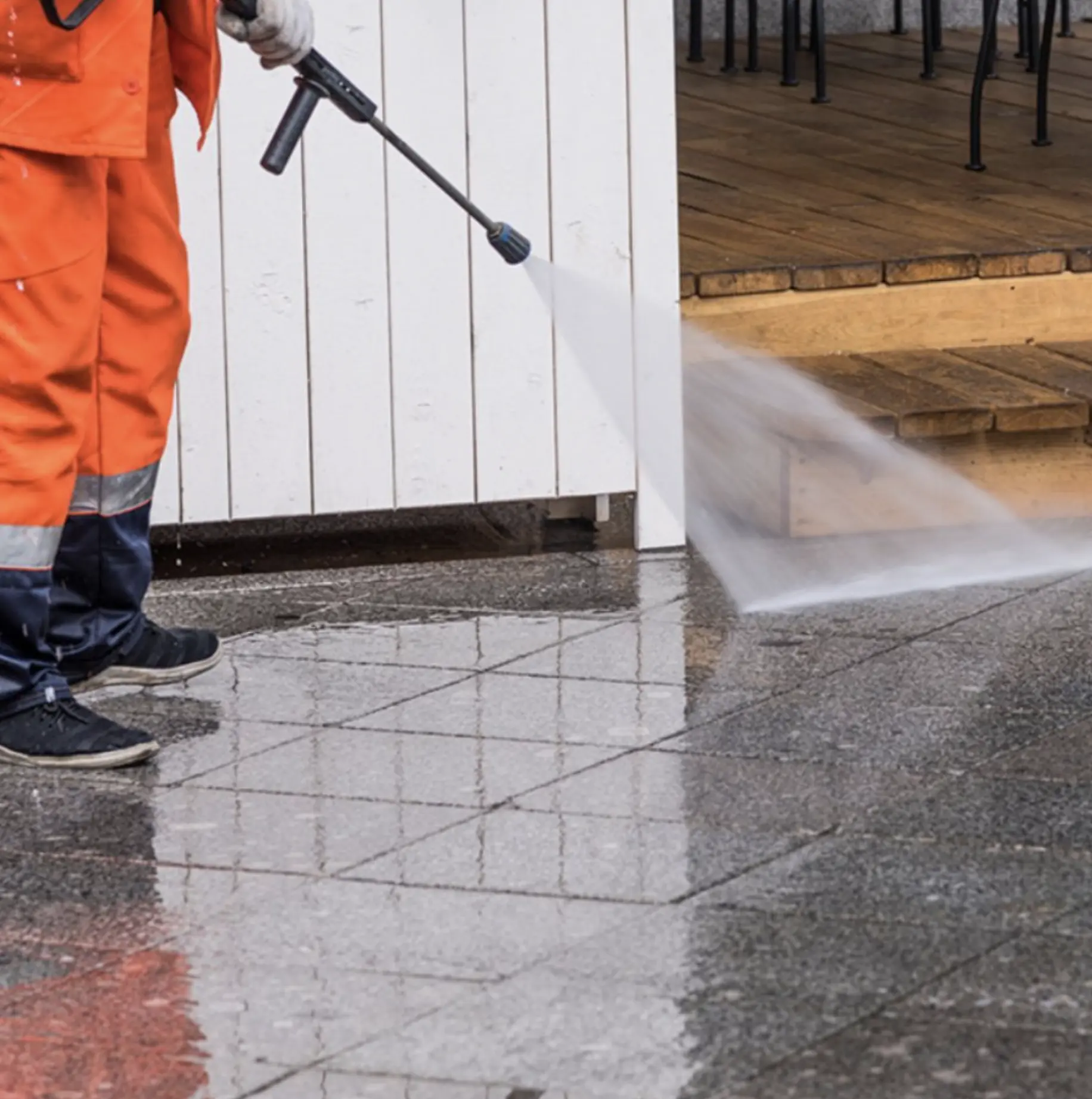
FAQ
Can I use my pressure washer with a regular garden hose?
Yes, most models connect to a standard garden hose, but check your unit’s Water Inlet and ensure the flow rate’s high enough.
Do I need detergent?
Not always, but for things like grease or algae, a compatible cleaning solution can boost cleaning power without upping PSI.
What’s better: electric or gas pressure washers?
Electric models are great for small jobs and easy starts. Gas engine models have more grunt and no trailing cable — ideal for tradies or big areas.
Why is my washer pulsing or losing pressure?
Could be air in the line, a blocked pressure nozzle, or water leakage around the pressure valve. Check fittings and give it a once-over.
Can I pressure wash a car with a jet nozzle?
Use a wide spray or foam cannon. A concentrated stream from a pressure water nozzle could strip paint or damage seals — not worth the risk to your beloved vehicle.
